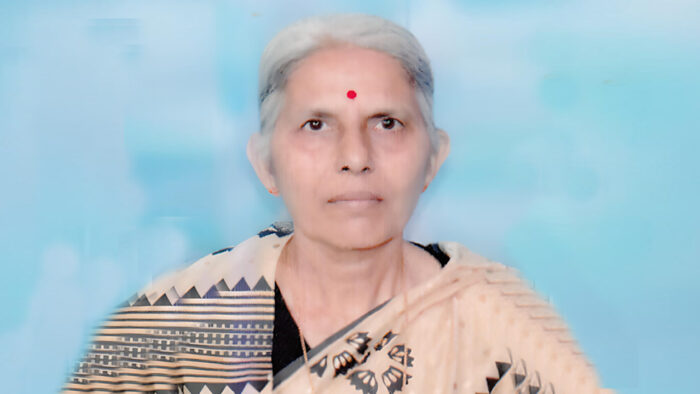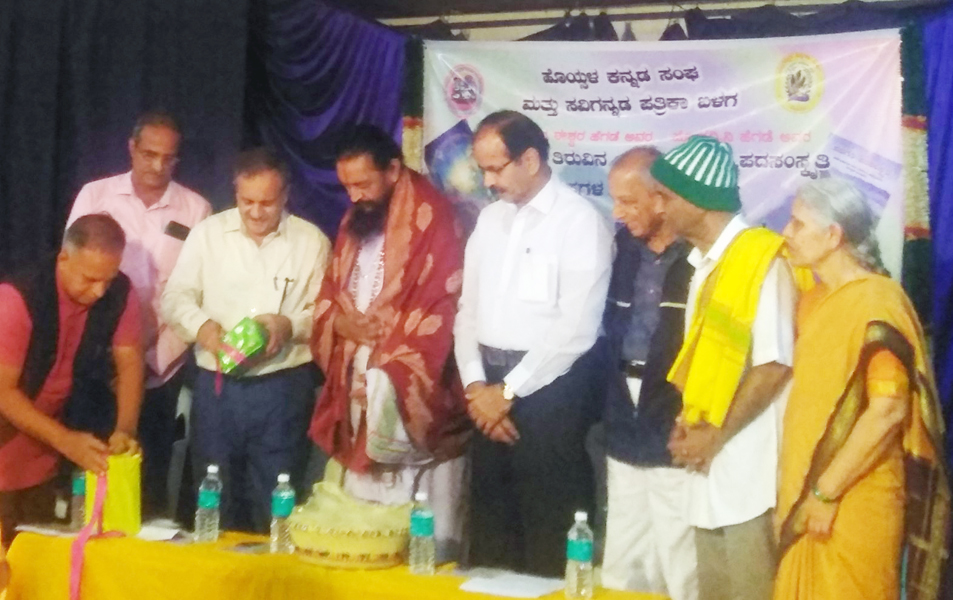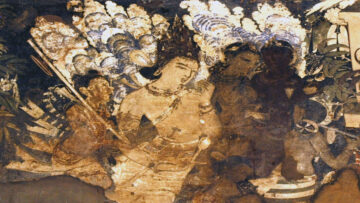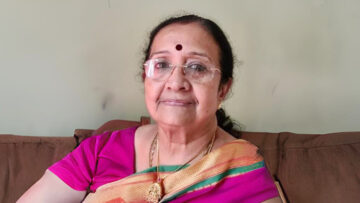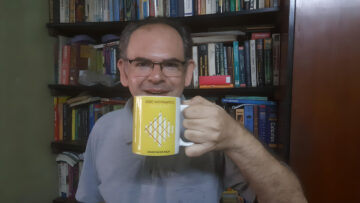Dr. Padmini Hegde is a retired principal of Taralbalu Vidyasamsthe. She is the author of Philosophia, British Anubhavavāda mattu German Bhāvanāvāda, Greek Tatvashāstra mattu Aadhunikavichāravāda. She has been an active contributor to the Kannada section at IndicA Today. In this interview, she talks about how she has tried to introduce Bharatiya Philosophy in her speeches and created fresh lessons for classroom sessions based on her reading.
What role has IndicA Today’s Kannada section played in spreading your work to newer audiences?
Not only the Kannada section but other sections also are trying their best to publish not only my work but also other works that are analytical, informative and enhance readers’ knowledge and poetic expression. Now any serious reader, whatever maybe the subject matter, wants to know its deeper significance. Simple (elementary) reading appears to them as “ಅಂತೆ-ಕಂತೆ” (fairy tale or meaningless imagination.) IndicA Today is catering and satisfying readers’ quests.
How did your career as an educationist shape your writing and vice-versa?
As a college teacher and philosophy lecturer having no specific text book to teach, I was in the habit of making fresh notes everyday referring to newly available books with an analytical approach to the subject matter. So my colleagues usually would exclaim, many times sarcastically, that I was writing my own book.
When I became a principal, I had to work hard to get B grade recognition for my college from NAAC in order to get salaries for my colleagues, which was the condition in those days. Academic efficiency, including writing textbooks, was a very important consideration for NAAC, while awarding grades. None of my colleagues showed interest in writing textbooks. I took upon myself that responsibility and for the first time I wrote textbooks in Kannada for 1st and 2nd degree students which was useful for those who wished to know Western Philosophy in detail.
My writing ability in general has been encouraged by All India Radio (AIR). For AIR Bhadravati, Chitradurga and Mysuru I have been writing small articles since 1990, for programs like Nalnudi, Arivina Shikhara, Pada Samskruti, Chintana etc as 5 minute pieces. Some editors, impressed by my approach to the topics on AIR, are publishing them in their magazines and daily newspapers. Now Surahonne.com, a web weekly magazine, is publishing my articles. It contains poems, short stories, novels as well as interesting long and short articles on any subject matter.
(Figure 1: Book Launch of Padagati- Pada Samskruti)
In what form can the Puranas be written or spoken about to make them important to audiences today? How can we incorporate them into school education which is largely westernised? Could you give examples of how you have done this?
We should be exposed to Puranas as they were originally written. Topics in them that appear, at present, to be significant from different points of view are to be enumerated and then afterwards they can be analysed from any selected point of view. If we present any Purana from one’s own point of view, it may be possible that we may miss the overall picture of Purana.
Stories in Puranas which speak about humanism should be incorporated in school text books. While teaching Philosophy at the college level, there is no scope for storytelling. Even when we teach the Philosophy of individual philosophers, we teach the systematic presentation of his principles. When I am asked to be the chief guest for a function, I usually tell stories related to personal lives of philosophers which motivates the audience to introspect on their own lives. For example the story of Nachiketa, and other stories of Gods who were the cause for the victory over Demons.
You have focussed on the itihasa – Ramayana and Mahabharata. We are now seeing an increase in translations of these epics, and interpretations and depictions on stage too. How do you approach these epics and what is your view on the regional and linguistic variations of the epics? What aspects of these epics inspire you the most?
I wish to read not only epics but also any literature, to find out the meaning “in between the lines”. Some regional and linguistic variations are the expression of partial understanding of the epics. Now many authors are interpreting the epics from the point of a single character, As a matter of fact no epic is single character oriented, their approach is holistic. Some others interpret the epics from the point of isms. But the epics’ approach is psychological, humane and realistic.
My interest in the Ramayana is obviously the Ramayana itself. Ramayana is a wonderful epic influencing the whole world, it may be said so, in its own way. Actually, I began to write commentary like analytic notes on each poem of my husband’s “Rasa Ramayana.” Nagarika, a fortnightly magazine from Honnavar, is publishing them regularly. Reading them, the sub editor of Praja Satya, a daily newspaper asked me to write an article on Sri Rama. For IndicA Today also I have written an article. Thus, Ramayana itself is motivating me to write about it!
Your writing on the Gita is very unique. What does the Gita mean to you which you want to convey to our readers?
Gita stresses on leading a meaningful life here and now itself by having an impartial knowledge of the situations that come across. It gives more importance to community-oriented life. It wants everybody to contribute for the wellbeing of the society, being a skilled person in any field which appeals to him/her.
You have written about PuTiNa, (P T Narasimhachar), a Kannada playwright and poet. Along with Kuvempu and D R Bendre, he forms the well-known trio of Kannada Navodaya poets. What drew you to his work?
Pu.Ti.Na’ s approach to life is religious as well as poetic. He gives importance to all Rasas. But finally, he wishes one should settle himself/herself in Shanta Rasa. He believes that only then can one enjoy a quiet life. This philosophy of life is well expressed in his “Srihari Charite”, winner of Pampa Prashasti. I have written a book “Rasa Harsha Vasha” elucidating his philosophy of life expressed in his “Srihari Charite”. By attending monthly “Vachana-Vyakhyana” programmes on Srihari Charite I was able to appreciate his literature. As a student in Manasa Gangotri, in the 70s, I used to see Pu.Ti.Na. in the campus. I was very much impressed by his glowing stature. Now I am impressed by his realistic approach to our culture.
What roles does Tatva play in the tapestry of life?
I believe that everybody has their own Tatva to which they abide by. But Tatva of some people is of broad range. For example, Salu Marada Timmakka, one of our idols who grows trees as punya karya, has expanded punya to to include serving the human race. It is the media’s responsibility to motivate people to extend the horizon of their Tatva.
Disclaimer: The opinions expressed in this article belong to the author. Indic Today is neither responsible nor liable for the accuracy, completeness, suitability, or validity of any information in the article.

